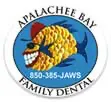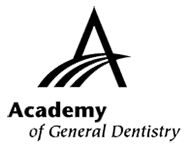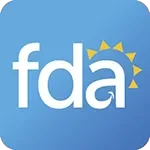Do you accept dental insurance?
Yes, we take several individual and employer-based PPO dental insurance plans. We do not take Medicaid or HMO insurance plans. You can contact your insurance provider to obtain a list of in-network dentists. In most cases, we will need to contact your insurance provider to verify your insurance. See our Insurance page for more information or call our office if you have more specific insurance questions.
Why does my tooth hurt?
Tooth pain could indicate a serious issue such as a crack or abscess or a minor issue, such as a sinus infection. It is important though that you do not ignore tooth pain as it could develop into a bigger issue if left untreated. This video is a good overview of common causes of toothaches. However, this does not substitute for a professional diagnosis. Call or text our office at (850) 385-5297 to schedule a comprehensive or limited exam and x-rays to properly diagnose the cause of your tooth pain.
Common Tooth Pain Causes:
I have a dental emergency, what do I do?
We know that dental emergencies and tooth pain are no fun. It is advised that you become an established patient of record in case of an urgent dental need or true dental emergency. We set aside a number of urgent and emergency dental appointments each day to see patients of record. As we have space available in our schedule, we may also be able to see patients who have not yet been established in our office. Please contact our office at (850) 385-5297 to check on availability for urgent and emergent dental appointments. If we cannot see you in our office the same-day, we will get you in as soon as possible based on your circumstances or try to recommend other available options for you. If it is after-hours and you believe you have an urgent dental need, press 2 and leave a message on our voicemail and we will contact you on the next business day. If you are experiencing a true dental emergency, press 1 to leave a message for the on-call provider and await further instructions. See our Dental Emergencies page for more information
Do you see children at your office?
Yes, we are a family practice and see all ages from children, teens, adults and elderly at our office. The American Dental Academy recommends you begin brushing kid’s teeth and seeing a dentist as early as when the first baby tooth appears. It’s of utmost importance that your child has good oral care and a positive experience early on at the dentist. Therefore, our office will begin seeing children as soon as they are able to sit still, follow directions and open their mouths for at least 30 minutes to ensure we can treat them. This is generally around the age of 5, but some kids may be ready sooner and some may need to be older. If you are unsure or wish for them to be seen earlier, you may take them to a pediatric dentist or call our office for a referral. You are always welcome to bring kids to your routine dental cleanings to start getting them comfortable with the sights, sounds and routines of the dental office. We can take a quick peek inside their mouth and will encourage them to sit in the chair by themselves or with you at the end of your appointment to show them what to expect for their dental appointment. This is a good opportunity to assess how they will do or if they need to be seen by a pediatric dentist before transitioning to a family practice. Dental offices are not childproofed and can be dangerous to unattended children, so we recommend bringing another adult to watch them during your dental appointment.
How often should I brush and floss my teeth? Do I really need to floss?
The old dentist joke is to only brush and floss the teeth you plan to keep. This joke isn’t far from the truth though. Ideally, you should brush your teeth at least twice a day. Once in the morning and once in the evening before bed and floss at the end of the day to remove any impacted food between the teeth or at the gumline. Of course, brushing and flossing after every meal to ensure that food doesn’t sit in crevices and between teeth for extended periods of time is even more ideal. If you can’t brush or floss between meals, swishing or sipping on plain water and chewing sugar-free gum or mints with xylitol can help. Scientific research continues to support the direct relationship between gum disease and serious systemic diseases. The most successful methods of maintaining your oral health are through the use of effective daily oral hygiene including brushing and flossing, as well as regularly scheduled professional cleanings and examinations. And yes, your hygienist will know if you lie about flossing!
Proper Brushing Technique:
Proper Flossing Technique:
What type of toothbrush should I use?
Brushing teeth daily removes food and plaque, the sticky white film of bacteria that coats the teeth. The bacteria in plaque produces acid that attacks and weakens tooth enamel, which will eventually lead to dental caries, or cavities. Brushing also stimulates the gum tissue to keep gums healthy and prevent gum disease. We recommend that you use an ADA-approved, soft bristle toothbrush. Brush at a 45-degree angle to the gums in small, circular motions to stimulate the gums. Brush all sides and surfaces of the teeth including the back molars and inside of the front top and bottom teeth using the tip of the toothbrush. It is recommended to brush twice a day, using a light, gentle pressure for two (2) minutes. Brushing too hard or with a medium or firm bristle can cause gum recession. Lastly, brush your tongue or use a tongue scraper to remove bacteria and freshen breath and rinse your mouth then follow with dental floss. We highly recommend our patients use an electric toothbrush. Often patients will brush longer as most have a two-minute timer, with less pressure and remove plaque more effectively using an electric toothbrush. Our hygienists will go over any other questions about toothbrushes, proper home care, good flossing technique and any recommended rinses, or in-office treatments such as fluoride, etc at your appointment.
Manual vs. Electric Toothbrush:
What type of infection controls are in place at your office?
Patients and our staff alike benefit from good infection control and universal precautions. Our dentist and staff are highly trained in infection control protocols, guided by several federal agencies including Occupational Safety and Health Administration (OSHA), Centers for Disease Control (CDC) and the Environmental Protection Agency (EPA).
After each patient, we sterilize all reusable equipment and instruments in a sanitizer machine called an autoclave, a device that kills bacteria and viruses using steam, heat and pressure. We wipe all surfaces, tables, chairs, lights, glasses, x-ray equipment, etc with medical grade wipes. We use disposable protective gear, gloves, masks, shields, gowns, suction tips and cannulas (needles) that are methodically removed and disposed of in medical waste bins. In direct response to Covid-19, medical grade air purifiers were installed in every patient room. Finally, our dental assistants, hygienists and dentists wash their hands between every patient with disinfecting hand soap.
The dental office should be one of the safest places you go in your day as it relates to virus and bacteria transmission. You should trust and be confident that your provider has the staff and patients safety as a top priority. If you ever have any questions or concerns about this, please feel free to discuss our safety protocols with Dr. Ben or one of our team members.
Where are you located?
We are located at 237 John Knox Road. Please see a map and directions here.
Other questions? Please contact us here.



